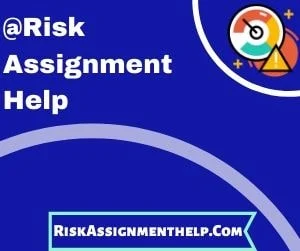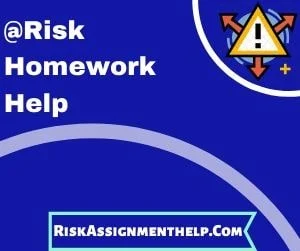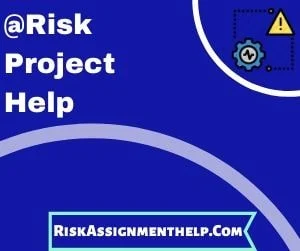Captive Insurance Assignment Help Checklist
Captive Insurance Assignment Help

If you need Captive Insurance project help, there are several approaches that are offered. One is to utilize the "very same job" methodology. Another is to develop a new role with a various set of dangers.
If you have a plan for your Captive Insurance Evaluation Project (RA), you must think about the technique. The job approach works if the task assigned is a little one. A job with a small chance of failure (or success) can allow for the very best results in handling dangers.
A lot of types of jobs are defined in terms of threat and are used for estimating and controlling risks. It is a lot easier to assess and manage a little job than a big one. If you have a huge task that you must manage every day, you are looking at huge risk.
Big jobs that include substantial risks, have a high influence on others. There are few methods to do a large job by yourself, or one that is challenging to do. When a large job is included, it becomes a synergy.
In some cases, risks can be as little as a single day-to-day action. The threats and chances in the daily life of the worker are considerable. Group management approaches can be useful for dealing with such dangers.
The very best way to establish a Captive Insurance assessment assignment is to appoint one major task to each individual. Most of the times, it is best to assign some danger to each person so that they understand the dangers involved with that job. The danger will be identified in the appointed job and will be consisted of in the yearly threat report.
Often it is essential to specify a brand-new role for people with different functions. Each function may have a brand-new task to carry out, and so the Captive Insurance evaluation assignment might end up being complicated. A new function will permit each worker to complete their job and specify the threats related to that task.
Handling the dangers involved in a Captive Insurance assessment assignment is an intricate process. The dangers will typically involve personnel. You require to take a look at how the risks will affect each employee individually, and how they will impact the company.
A fundamental part of this procedure is to choose who has the obligation for the task. Is it the worker, or the manager? It is not uncommon for a person to delegate a task that needs danger evaluation, but that is not how to handle threats effectively. The Captive Insurance evaluation assignment must be assigned by an authority.
When appointing a Captive Insurance assessment assignment, think about a situation where you need to hand over, but don't want the danger to go undetected. You want to be sure that the risk is appointed effectively. If the Captive Insurance evaluation task is assigned to someone who does not have the understanding to handle the task, there is a threat of a danger evaluation ending up being another chance for error, causing extra danger.
The easiest way to determine who has the duty for a Captive Insurance assessment project is to utilize group management. If you have more than one team managing the task, think about organizing tasks based on the skill level of the employees in each team. Each group can consider its own technique to risk evaluation. Appointing the exact same job by each team can puzzle the tasks, but it is a method to ensure that the risk is designated properly.
The Captive Insurance evaluation project is an intricate task that can make or break your company. With a little help from management training, you can prevent the common pitfalls and make sure that your @risk assignment results in effective results.
Captive Insurance Homework Help

Captive Insurance research aid can be a genuine video game changer when it comes to getting the most out of the expert service that a company offers its workers. This is likewise true of most Captive Insurance evaluation projects, which can make a huge distinction when it pertains to lowering general threat.
It holds true that every threat task can have an impact on the business's bottom line. Every private assigned to a specific risk activity has a direct effect on the total structure of the company. If the entire personnel is able to grasp the dangers involved and take steps to decrease the threats associated with that particular assignment, there will be a much bigger effect than if every individual were to feel disinterested in the assignment.
For a Captive Insurance assessment task, this can make a huge distinction. A person's attention and interest are likely to move towards the appointed job. If there are too many questions or concerns associated with the project, then there may be a lower possibility that the entire team will find a solution to the issues connected with the task.
However the work of a Captive Insurance project is to produce chances for progress and that suggests that the project needs to be attended to. The very best way to do this is by designating time to solve problems related to the task.
A high-quality support system is essential when it concerns supporting the development of an organization through the development of Captive Insurance evaluation projects. You need to search for business that have a number of individuals appointed to this type of assignment so that all of them are as close as possible to the task. This guarantees that the assignment is dealt with effectively and that all of the private requirements are satisfied for the project.
When you're designated to Captive Insurance task, it can be tempting to avoid a couple of tasks even if they are no longer urgent, or you wish to move onto another project. But when this takes place, it's essential that you take actions to keep in touch with individuals assigned to the assignment.
You'll likely be making a great deal of development on the danger assessment project if you're working closely with your project supervisor. The task manager can be a valuable source of feedback on the progress you're making on the assignment and any concerns that are needed to be dealt with.
When it comes to handling your danger evaluation assignment well, it's important that you work as a group. And when it comes to working as a team, the best way to accomplish this is by entrusting jobs.
Some jobs might be hard to entrust such as finding a service to an issue related to the danger evaluation project. If there are a number of individuals designated to the task, then it is necessary that they can work as a group to solve the issue.
If the project is not immediate or you do not need more time to deal with the project, then you can select to delegate the task. However, if the project is very urgent, then it's essential that you maintain a day-to-day journal of how the designated task is progressing and if there are any areas that need more evaluation prior to you can start on them.
If you can hand over tasks effectively, then the risk evaluation project can really be a lot of enjoyable. It's necessary that you keep your eyes and ears open and remain connected to other team members to make sure that you can be as productive as possible with the task.
Getting the most out of Captive Insurance homework assistance and delegation strategies can make a real difference when it concerns guaranteeing that the Captive Insurance evaluation project is well handled. That means that you'll be well placed to develop enduring impact for your organization and that you'll continue to take pleasure in life with your brand-new employee.
Captive Insurance Project Help

Captive Insurance task aid is important to task success. Threat evaluations can help avoid, or at least reduce, pricey errors. By doing this you can move ahead and complete the task on time.
The Captive Insurance assessment assignment, also called the Threat Evaluation Ratio (R.A.Q.) is an examination of the Task Manager's capability to effectively complete the project.
Many areas of evaluation must be evaluated to complete an effective Captive Insurance evaluation assignment. A group of quality assurance professionals, task supervisors, job supervisors play an important function in the R.A.Q. evaluation. Each person has an unique function and each area of the process requires specific training and know-how.
However, there are numerous common aspects throughout the many different locations that make up a task. These common locations are the Captive Insurance categories that are designated to jobs. Each classification has various characteristics that make it applicable to various tasks.
There are four significant Captive Insurance, or important requirements that should be fulfilled for the task to be successful. These are: expenses, schedule, technical dangers and scope. These four Captive Insurance are often appointed to jobs by job managers, task employee.
A task is successfully completed when all 4 dangers have actually been properly evaluated. Effective projects do not fulfill any of the four threats, however the job fulfills several of the staying 2 dangers.
When a task fails to satisfy any of the 4 major risks, the Project Supervisor must first of all examine project risk and after that establishes a restorative action strategy. These corrective actions ought to be developed by the task manager and/or the senior Task Manager.
Prior to examining the project, the project supervisor need to evaluate the job requirements, understanding the R.A.Q. required for the task. Understanding the requirements is essential for the Task Supervisor to establish the required risk evaluation category.
The Project Manager then completes the risk evaluation task by listing each risk type and the matching needed Threat Category. Each R.A.Q. category must have a list of categories and threat levels and these requirements must be used in an analysis of the job to make sure that all danger classifications are being appropriately determined and represented.
As soon as all risk classifications are clearly defined and accounted for, the Job Manager will finish the classification of the task. This includes identifying the risks that will be reduced and the threats that must be attended to. Mitigation refers to lessening the impact of the recognized threats on the task.
The Job Supervisor will then utilize the R.A.Q. to generate the examination report. The Job Manager will also develop a Task Status Report, which will identify any corrective actions that should be taken and recognize the development of the job.
The Project Supervisor need to totally finish all jobs associated with finishing the Captive Insurance project and the other steps necessary to complete the project.